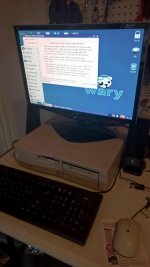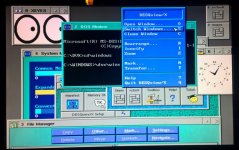Back in the day when I first had a 24/7 internet connection at home, and wanted a router/home server, I started with an old 486DX2-66 machine, running FreeBSD, I believe version 4.0 at the time.
At some point I was pretty much my own 'ISP', because I had registered a domain for myself, and the machine did all the hosting for me. A mail server, FTPD, HTTPD, DNS, and various other services.
Over time it developed problems with the HDD, and since you can't put new HDDs in old machines, I had to upgrade the machine. Over the years, it went to a Pentium 133, Pentium Pro 200 and PII 350. They were all old machines that I had lying around, so it never cost me anything.
However, after the PII 350, I decided to finally get a cheap barebones low-end Pentium DualCore system, and that's what's still running today.
The 'domain' became smaller over time, as I figured it was easier to make use of free 'cloud' services than to host things myself, and having to configure, update and back up everything myself.
So my DNS is now hosted by afraid.org, and I use gmail to host mail for my domain. I no longer make much use of my own FTPD or HTTPD, since I share files with Dropbox, and I publish articles/blogs on Wordpress.
In fact, the HTTPD is currently not in a working state. An upgrade went wrong a while ago, and I have to reinstall the OS to get all the proper libraries back in working order, before I can get Apache installed again. But I can't be bothered really




